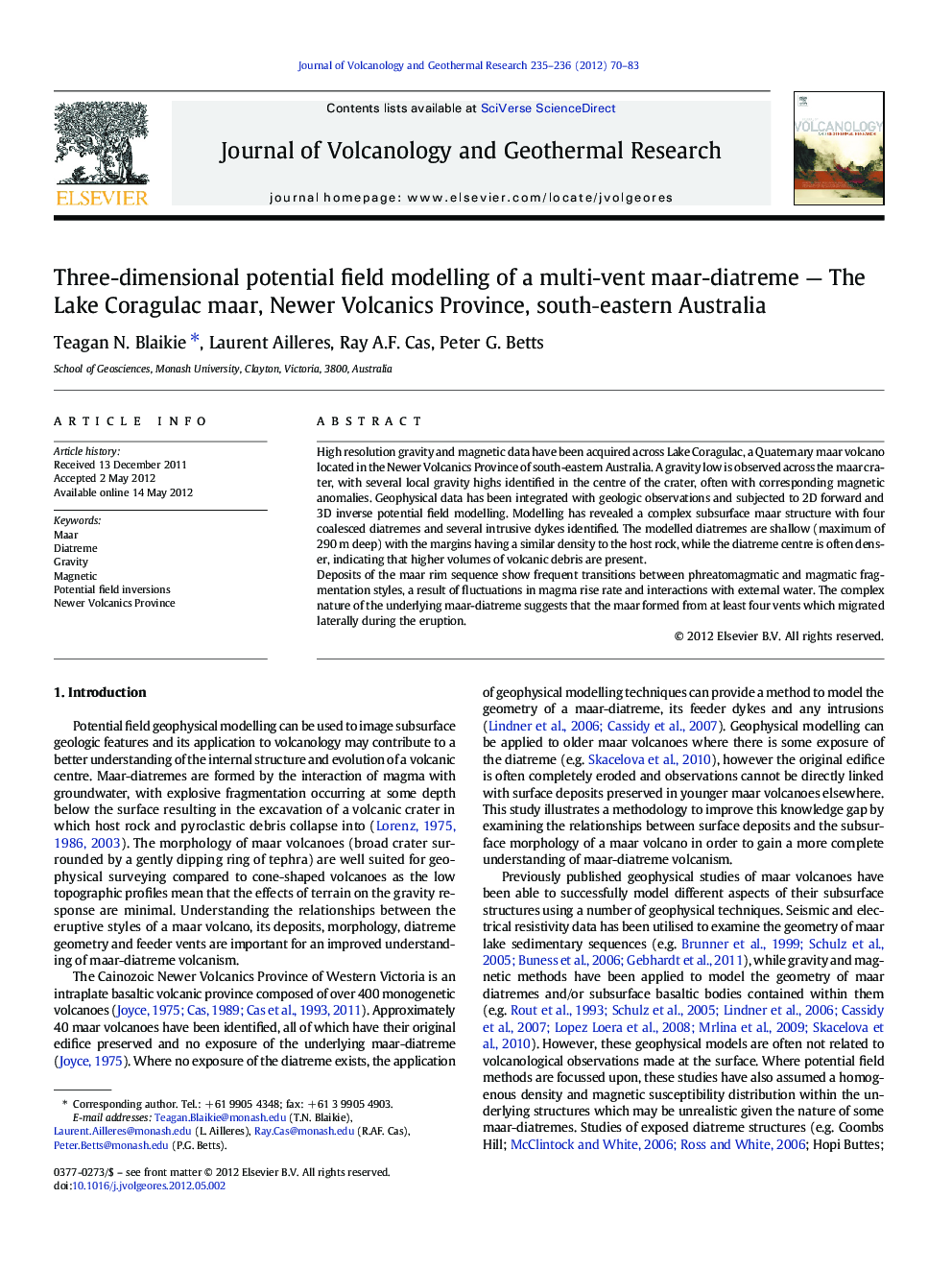| Article ID | Journal | Published Year | Pages | File Type |
|---|---|---|---|---|
| 4713730 | Journal of Volcanology and Geothermal Research | 2012 | 14 Pages |
High resolution gravity and magnetic data have been acquired across Lake Coragulac, a Quaternary maar volcano located in the Newer Volcanics Province of south-eastern Australia. A gravity low is observed across the maar crater, with several local gravity highs identified in the centre of the crater, often with corresponding magnetic anomalies. Geophysical data has been integrated with geologic observations and subjected to 2D forward and 3D inverse potential field modelling. Modelling has revealed a complex subsurface maar structure with four coalesced diatremes and several intrusive dykes identified. The modelled diatremes are shallow (maximum of 290 m deep) with the margins having a similar density to the host rock, while the diatreme centre is often denser, indicating that higher volumes of volcanic debris are present.Deposits of the maar rim sequence show frequent transitions between phreatomagmatic and magmatic fragmentation styles, a result of fluctuations in magma rise rate and interactions with external water. The complex nature of the underlying maar-diatreme suggests that the maar formed from at least four vents which migrated laterally during the eruption.
► The subsurface structure of a maar volcano was imaged using geophysical modelling. ► Multiple coalescing maar diatremes were identified indicating vent migration. ► Soft-sediment behaviour influenced the eruption and final geometry of the diatreme.
